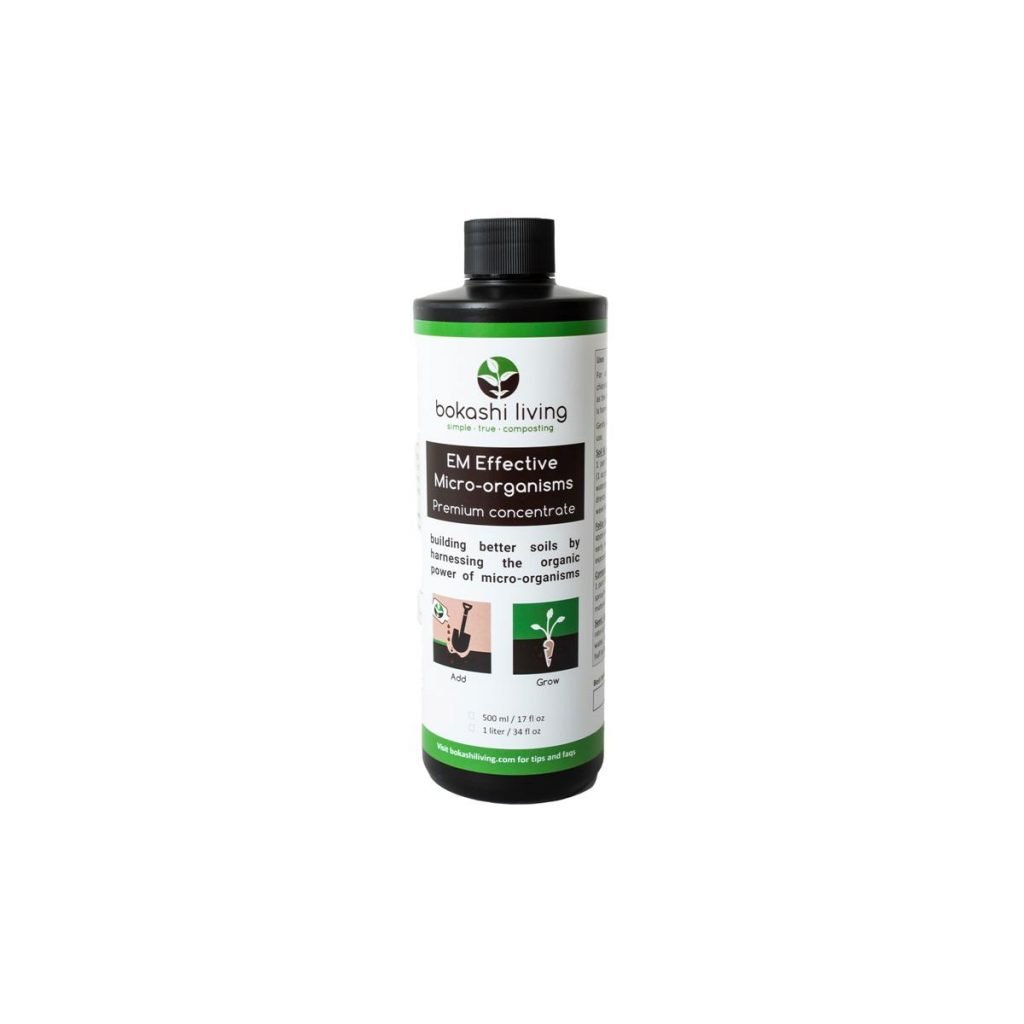Why activate EM?
Our EM (Effective Micro-organisms) mother culture does not have to be activated and it is perfectly ok to use it straight out of the bottle. The main reason to activate (or expand) EM is to save money. By activating EM you can increase your EM supply by over 20 times. Activated EM typically costs less than $2 a liter; including the cost of the EM mother culture.
By following these instructions, the activated EM will have the same strength as the mother culture EM. The activated EM can be used in exactly the same way as the EM mother culture.
The only downside to activating your activated EM is that activated EM only stores for up to 30 days (compared to the mother culture which will store for a year or more).
How to activate EM?
Ingredients:
To activate EM you will need (per liter):
- 1 part EM mother culture (40ml)
- 1 part molasses (40ml)
- 20 parts water (800ml) *
- A clean plastic container with lid (approximately the same volume as the recipe being made) **
* We recommend using dechlorinated water as chlorine can kill microbes. Rain water and spring water work well for activating EM. If water is chlorinated then allow the water to stand in an open container for at least 24 hours.
** There may be some off gassing and expansion during the activation process so don’t use glass or metal containers.
Directions:
- First, boil approximately 30% of your water.
- Mix the hot water with the molasses and stir thoroughly.
- Top up with the remainder of (room temperature) water.
- Mix in the EM mother culture and place in the sealed plastic container.
- Then place the mixture in a warm place 77-95 F (25-35 C) for 5-7 days. The container may need to be ‘burped’ every day or two as gases may build up within the container.
- Your activated EM should have a sweet smell and is now ready to use. A good fermentation may lead to white yeast flakes on the surface of the activated EM. These white flakes are completely harmless and do not affect the product.
- Store unused activated EM in the sealed container at room temperature and use within 30 days. The activated EM has gone bad if it develops a putrid smell and/or the pH rises above 3.8.
Order now! Find all your bokashi composting supplies in our online shop.



Thanks for this recipe and information post. Now you got me wondering why the shelf life is so short when making a batch of the liquid using your liquid as a starter but that it lasts only 30 days whereas your original formula will last up to a year. Does refrigeration improve its lasting effects or just the opposite? I read that you said to store it at room temperature.
Great question. The microbes in the mother culture are in a dormant state, hence the longer shelf life. However, once you expand the microbes they become activated and therefore have a shorter shelf life. The activated microbes preferred temperature is room temperature and, unfortunately, lower temperatures may harm them.
I’m interested in the ingredients used for the powder and additives. Could I get copy of any research that’s been done on how it helps/hurts the soil long term? Also could it leach into ground water and if so what’s the result?
I’m looking forward to trying!
It’s really all about the microbes in the bokashi bran. Most soils already contain all of the nutrients and minerals needed for plants to grow, they just may not be in a form that is readily available to the plants. Microbes create a symbiotic relationship with the plant roots, accessing nutrients and minerals and transporting them to the plant roots.
As bokashi is a microbial additive, there is no concern over leachate. These microbes are all naturally found in healthy soils so you do not need to be concerned with leaching and runoff in to nearby waterways.
If you are looking for papers and research on bokashi microbes, take a look at http://www.emrojapan.com. You’ll find lots of studies and research papers there.
Please I need help from this site wic am working on a project topic which is production of organic manure using household waste I need guideline for it
Thanks for the question. Bokashi composting is a great way to produce high quality compost from household food waste. I suggest you start on our homepage (www.bokashiliving.com) and also take a look at our videos on http://www.bokashiliving.com/how-to-bokashi-compost/
And feel free to ask here if you have any specific questions.
Happy composting 🙂